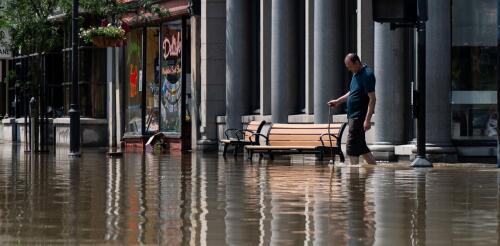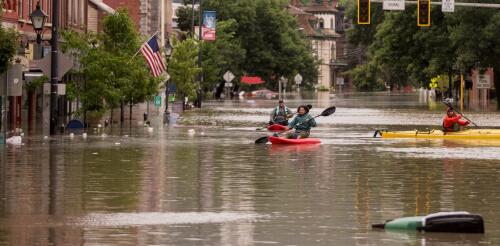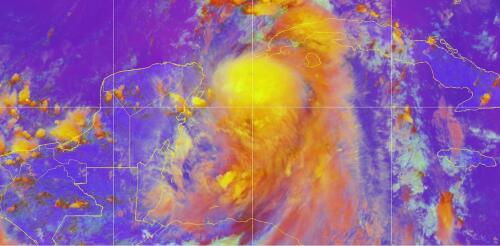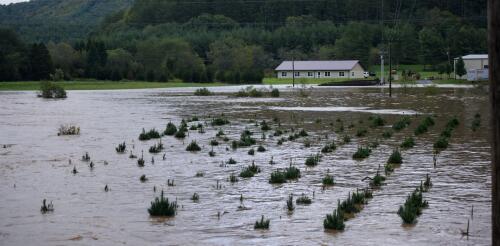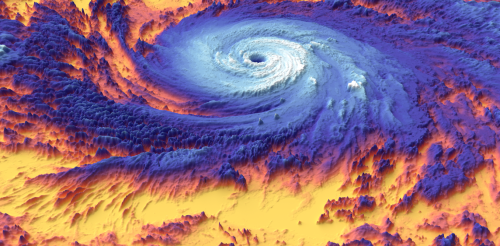Tropical storms
National weather analysts released their 2023 billion-dollar disasters list on Jan. 9, just as 2024 was getting off to a ferocious start. A blizzard was sweeping across across the Plains and Midwest, and the South and East faced flood risks from extreme downpours. The U.S. set an unwelcome record for weather and climate disasters in 2023, with 28 disasters that exceeded more than US$1 billion in damage each. While it wasn’t the most expensive year overall – the costliest years included multiple hurricane strikes – it had the highest number of billion-dollar storms, floods, droughts and fires of any year since counting began in 1980, with six more than any other year, accounting for inflation. 2023’s billion-dollar disasters. Click the image to expand. NOAA The year’s most expensive disaster started with an unprecedented heat wave that sat over Texas for weeks over...
The year 2023 was marked by extraordinary heat, wildfires and weather disasters. In the U.S., an unprecedented heat wave gripped much of Texas and the Southwest with highs well over 100 degrees Fahrenheit (37.8 Celsius) for the entire month of July. Historic rainfall in April flooded Fort Lauderdale, Florida, with 25 inches of rain in 24 hours. A wave of severe storms in July sent water pouring into cities across Vermont and New York. Another powerful system in December swept up the Atlantic coast with hurricane-like storm surge and heavy rainfall. The West Coast started and ended the year with flooding and mudslides from atmospheric rivers, and California was hit in August by a tropical storm – an extremely rare event there. Wildfires ravaged Hawaii, Louisiana and several other states. And Canada’s worst fire season on record sent thick smoke across large parts of North America. A person walks through a scene of destructio...
Forecasters expected Hurricane Idalia to intensify into a major hurricane as it headed over exceptionally warm waters in the Gulf of Mexico, on track for landfall in Florida on Wednesday, Aug. 30, 2023. Hurricane warnings were posted along a wide stretch of Florida’s Gulf coast, from near Sarasota to the Panhandle, including Tampa Bay. Hurricane scientist Haiyan Jiang of Florida International University explains how two conflicting forces – record-high ocean heat and wind shear, the latter influenced by El Niño – were determining Idalia’s future, and how they have made the 2023 hurricane season overall difficult to forecast. What role is ocean temperature playing in Idalia’s forecast? Forecasters are watching several factors, but the biggest is the very high sea surface temperature in the Gulf of Mexico. The Gulf is typically warm in late August, and we often see hurricanes this time of year. But this summer, the sea surface temperature has...
Hurricane Helene caused deadly and destructive flooding when it swept through the Southeast on Sept. 26-29, 2024. Across a broad swath of western North Carolina, where the worst flooding occurred, the amount of rainfall exceeded levels that would be expected on average only once every 1,000 years. But this wasn’t the first 1,000-year rainstorm in North Carolina this year. In mid-September, an unnamed slow-moving storm produced more than a foot of rainfall closer to the Atlantic coast. This storm inundated areas that had already been drenched by Tropical Storm Debby in August. As atmospheric scientists and state climatologists, we believe it’s important for the public to understand the risk that extreme events may occur. That’s especially true as climate change alters the conditions that create and feed storms. Here’s how scientists calculate storm probabilities, and why events like a 1,000-year storm can happen much more frequently in some places than tha...
When a hurricane hits land, the destruction can be visible for years or even decades. Less obvious, but also powerful, is the effect hurricanes have on the oceans. In a recent study, we show through real-time measurements that hurricanes don’t just churn water at the surface. They can also push heat deep into the ocean in ways that can lock it up for years and ultimately affect regions far from the storm. Heat is the key component of this story. It has long been known that hurricanes gain their energy from warm sea surface temperatures. This heat helps moist air near the ocean surface rise like a hot air balloon and form clouds taller than Mount Everest. This is why hurricanes generally form in tropical regions. What we discovered is that hurricanes ultimately help warm the ocean, too, by enhancing its ability to absorb and store heat. And that can have far-reaching consequences. How hurricanes draw energy from the ocean’s...
